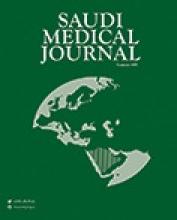Abstract
OBJECTIVE: To identify the strengths and weakness of arbitrary primed-polymerase chain reaction (AP-PCR) and plasmid profiles for typing of Pseudomonas aeruginosa (P. aeruginosa) and tracking of source of infections.
METHODS: Seventy-four strains of P. aeruginosa were isolated from burn patients and hospital environment between January to April 2003 in Ghotbadden Burn Hospital, Shiraz, Iran. The strains were classified by photo Capt Mw program, similarity and clustering of strains were assessed using NTSYS-PC version 2.02K software.
RESULTS: Based on 50% and 64.7% and 67.5% similarity on the plotted dendrogram, 38 plasmid profiles were classified into: 2, 3 and 5 clusters, respectively. Photo Capt Mw program categorized AP-PCR products to 47 different types of 6 to 12 bands between 0.376 to 3.7 kb. Based on dendrogram pattern 3 levels (62 %, 81% and 84.6%) of similarity were selected. Using these criteria 2, 5and 11 clusters were obtained, respectively.
CONCLUSION: As compared with plasmid profiles, AP-PCR analysis protocol is rapid, reproducible and differentiated the isolates with higher discrimination power. These results suggest that during admission of patients in burn center a limited number of common strains cross-contaminate burn victims. However, transmissions of infection from hospital environment to patients also occur in the minority of the victims. To control cross-contamination of the patient wounds with antibiotics resistant isolates, strong disinfection of patients' bathroom after scrubbing of each patient wounds is mandatory.
- Copyright: © Saudi Medical Journal
This is an open-access article distributed under the terms of the Creative Commons Attribution-Noncommercial-Share Alike 3.0 Unported, which permits unrestricted use, distribution, and reproduction in any medium, provided the original work is properly cited.






